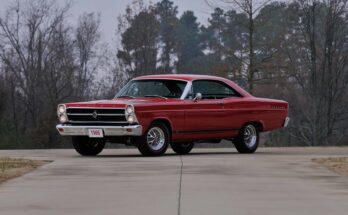In the heart of 1968, a year of upheaval and change, Chevrolet rolled out a truck that would quietly steal the spotlight and carve its name into automotive history—the 1968 C10. This wasn’t just another pickup; it was a bold evolution of American ingenuity, blending rugged utility with a newfound sense of style that captured the spirit of a nation on the move. The C10, part of Chevrolet’s second-generation C/K series, emerged as a symbol of versatility, durability, and a touch of swagger that still turns heads today.
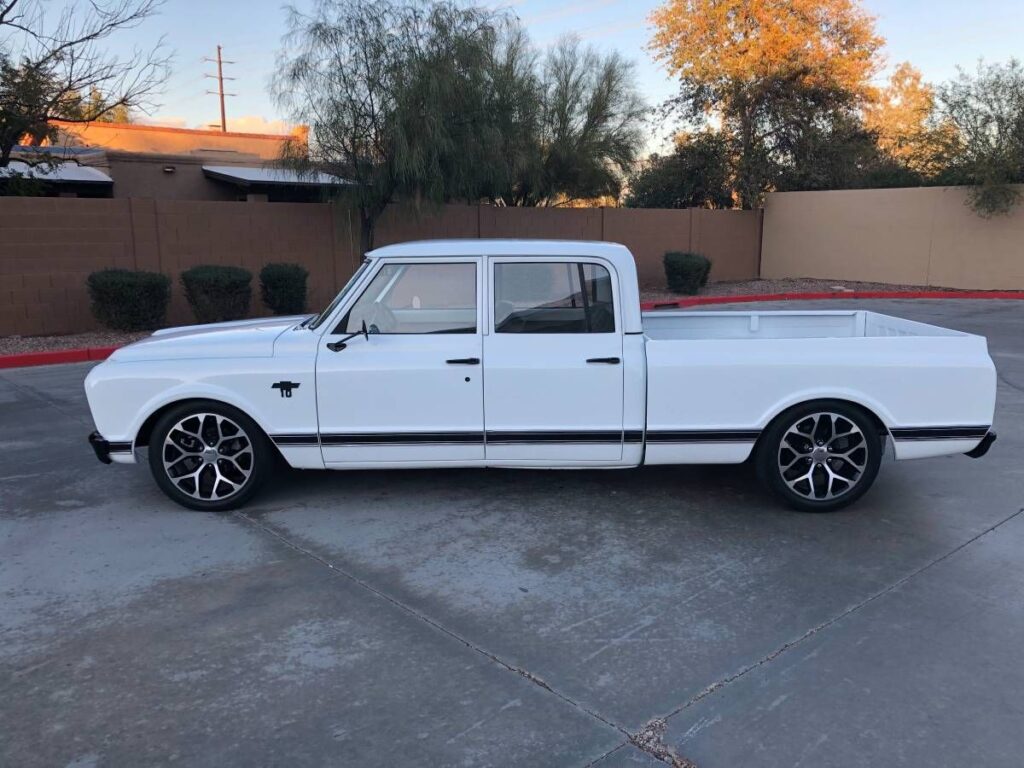
The Dawn of the Action Line
The story begins with Chevrolet’s “Action Line” C/K series, introduced in 1967 and refined for 1968. General Motors had a vision: to redefine the pickup truck, transforming it from a utilitarian workhorse into a multi-purpose vehicle that could haul hay by day and cruise Main Street by night. The 1968 C10, a half-ton, two-wheel-drive model, was the star of this lineup, embodying a perfect balance of form and function. Its sleek, redesigned body—crisp lines, a bold grille, and a lower stance—gave it a modern edge that outshone competitors like Ford’s F-Series.
Engineering a Legend
Under the hood, the 1968 C10 offered a range of powertrains that showcased Chevrolet’s commitment to performance and reliability. The standard engine was a 250 cubic-inch inline-six, delivering 155 horsepower, while a new 307 cubic-inch V8, replacing the older 283, pumped out 200 horsepower for those craving more muscle. For the first time, a 396 cubic-inch big-block V8 was introduced, offering 310 horsepower and making the C10 a beast for heavy-duty tasks or spirited drives. Transmissions were equally versatile: a three-speed manual was standard, with options for a three-speed overdrive, four-speed manuals, or automatic options like the Powerglide or Turbo-Hydramatic 350 and 400.
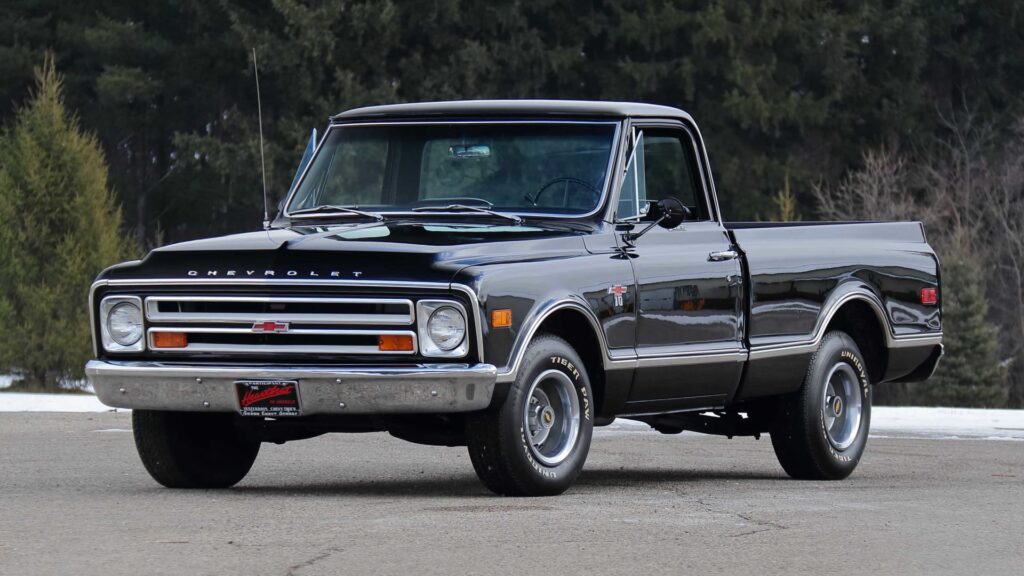
The C10’s suspension was a standout feature. Most models featured coil springs at all four corners, a departure from the traditional leaf springs of earlier trucks, providing a smoother ride that appealed to both farmers and suburbanites. Four-wheel-drive K10 models, however, stuck with leaf springs for rugged durability. The truck came in two wheelbase options—115 inches for the short bed (6.5 feet) and 127 inches for the long bed (8 feet)—available in Fleetside or Stepside configurations, with wood or steel bed floors. Today, wood-bed C10s command a premium among collectors for their nostalgic charm.
A Touch of Class
What set the 1968 C10 apart was its nod to comfort and style. Chevrolet introduced features previously reserved for their sedans, like AM/FM radios, carpeting, and two-tone paint schemes. The Custom Sport Truck (CST) package, priced at just $161 extra, added Western-style vinyl seats, roof rim molding, and chrome accents, elevating the C10 to near-luxury status. The Custom Comfort and Convenience package bridged the gap between standard and CST trims, offering a refined interior for a truck still tough enough to handle a full load. In celebration of Chevrolet’s 50th year of truck-making, a special Anniversary package featured an exclusive white-gold-white paint scheme, a nod to the brand’s legacy.
Safety and design tweaks also marked the ’68 model. Side-marker reflectors were added to fenders to meet new federal regulations, and the small rear window of 1967 was replaced with a larger “full-view” window, improving visibility and giving the cab a more open feel. The Longhorn model, a 3/4-ton variant with a 133-inch wheelbase, debuted for those needing extra bed length.
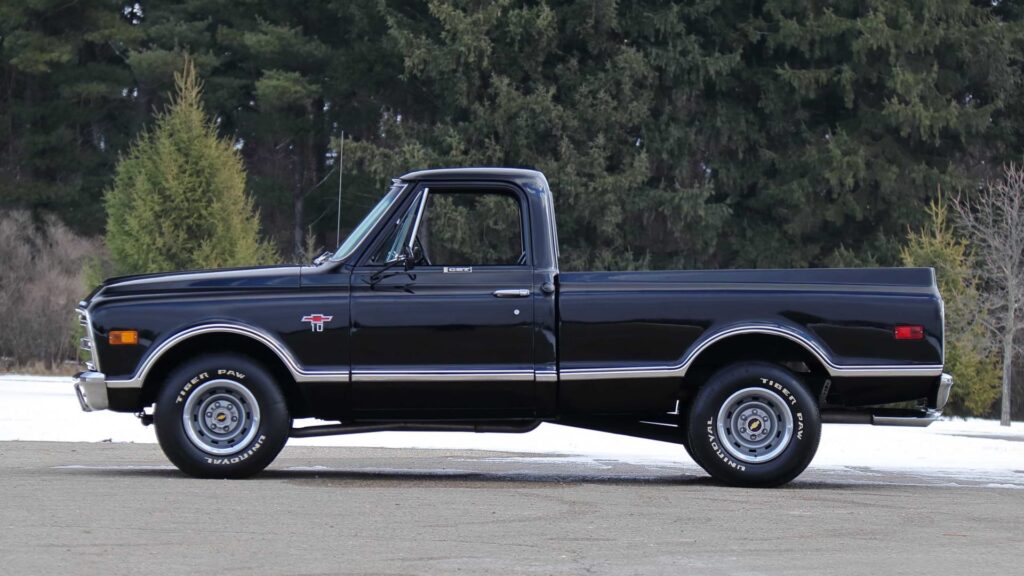
Production and Legacy
While exact production numbers for the 1968 C10 are elusive, the Action Line series saw robust output across multiple U.S. and Canadian plants, with additional production in South America. The C10’s versatility—offered as a pickup, chassis-cab, or basis for the Suburban—made it a cornerstone of GM’s lineup. Its timeless styling and shared engines with Chevy’s popular cars, like the Chevelle and Camaro, ensured easy maintenance and a thriving aftermarket, cementing its status as a collector’s darling today. Hagerty notes that 1968 C10s, especially those with wood beds or in CST trim, are highly sought after, with pristine examples fetching $46,000-$86,000.
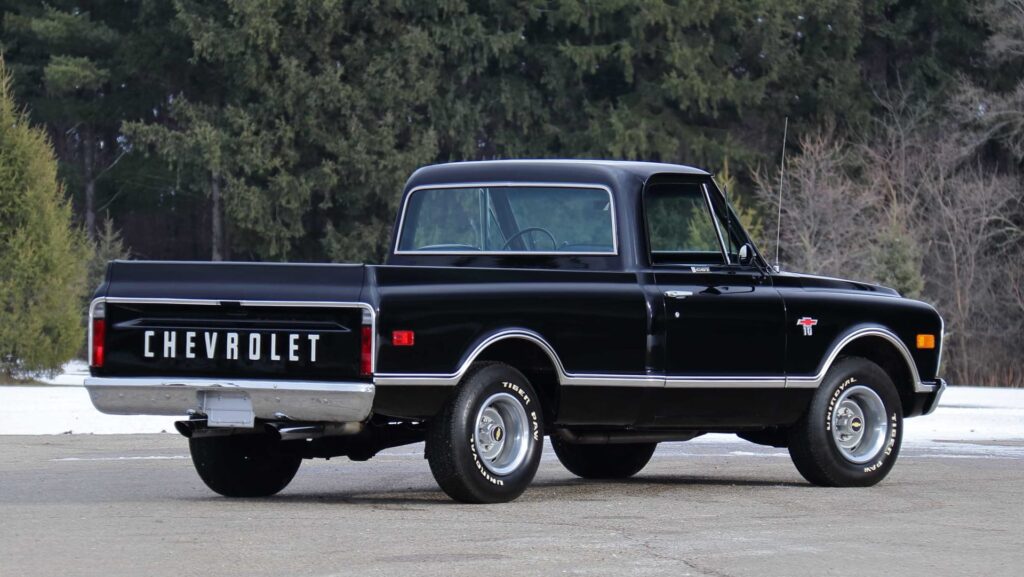
A Cultural Icon
The 1968 C10 wasn’t just a truck; it was a canvas for a generation. From farm fields to custom car shows, it became a favorite for hot-rodders and restorers. Posts on X highlight its enduring appeal, with owners like Gene Stills and @Rach_virginia3
proudly showcasing their modified C10s, from short-bed conversions to LS V8 swaps. Whether restored to factory specs or transformed into a resto-mod with modern powertrains, the C10 remains a symbol of freedom, hard work, and individuality.


